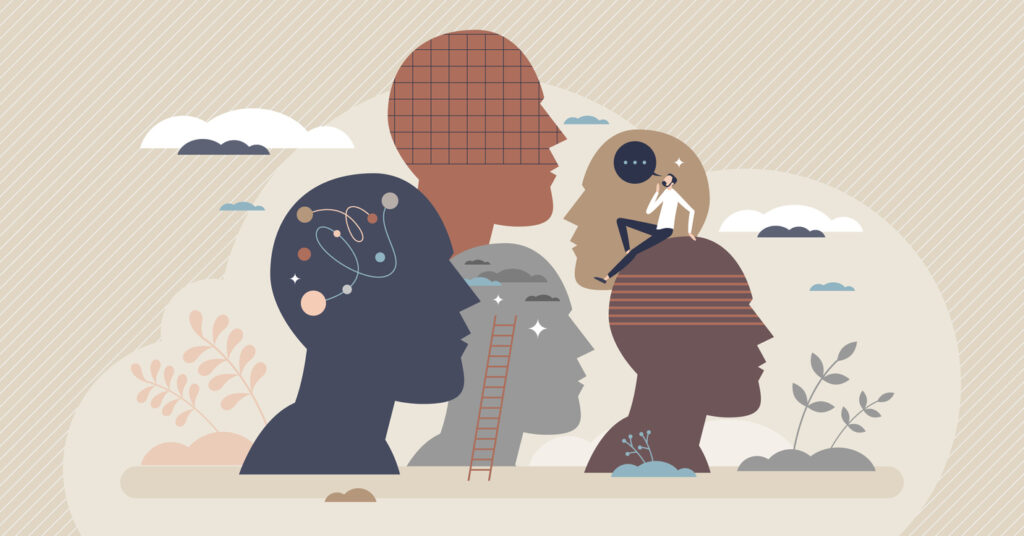When considering how to train different neurotypes in the workplace it can make it easier if the starting point is that everyone is different. Taking this into account, it is advantageous for all organisations to have work training set up that can be understood by people from different cultures as well as those with different neurotypes.
Differences across culture, nationalities and neurotypes can often lead to a mismatch in various areas, which HR professionals and employers need to watch for.
Being culture-aware
Mixing different neurotypes in a workplace is not dissimilar to mixing different nationalities and cultures. Most people are aware that there are differences within social interaction between cultures and of course there are different languages too.
Consideration should be taken with regards to specific, individual differences and disabilities that require accommodation such as the font and colours of written text, simplicity of language etc. This is something that should be automatically adjusted for training for all employees as organisations will have a number of employees who have not disclosed their difficulties.
These differences across culture, nationalities and neurotypes can often lead to a mismatch in various areas, which HR professionals and employers need to watch for. These include:
Communication
This can be talking too much or too little (think western culture versus eastern); having specific topics of interest (also different between different cultures); different ways of looking at others or making eye contact (again think western versus eastern) and being very direct and honest which can be perceived as rude (think Scandinavian versus British).
Executive functioning
For example, setting goals and time management which is another area where issues may arise. Time management and time keeping are very different from person to person and from culture to culture. There may not be a specific difference in this between neurotypes but there is between cultures.
In Scandinavia for example, being late for a meeting is unacceptable. In other European cultures, although it is frowned upon, it is not as much of an issue. Different neurotypes might find parts of executive functioning difficult but within a group of employees this will span across all neurotypes.
Finally, ensure that the goals of and reason for the training are clear from the start.
Neurodivergent individuals tend to have a broader sensory band that is fine-tuned to detect issues that load human senses negatively, such as harsh lightning, unpleasant smells, disturbing noises or crowding of personal space.
Context difficulty
It can be hard for neurodiverse individuals to interpret situations to fit with a specific context such as understanding sarcasm or local jokes. Training and more generally, workplaces, should be without sarcasm as it is not helpful or kind to anyone. Also try to keep jokes out of training as they can be used in the wrong way to disguise discrimination. What is most needed is finding a way where everyone can learn more easily through using universal methods of delivering training.
Many neurodivergent people have certain areas they find difficult such as asking for help and accommodation, avoiding being taken advantage of and recognising toxic red flags. This should be considered when doing work related training that includes neurodivergent employees.
In addition, neurodivergent individuals tend to have a broader sensory band that is fine-tuned to detect issues that load human senses negatively, such as harsh lightning, unpleasant smells, disturbing noises or crowding of personal space. Because of increased sensory bands, they feel the impact of these things sooner than neurotypicals and it can therefore be an advantage to everyone to use this as a guide to how to make the learning environment optimal for everyone.
Neurodiverse people often seek proprioceptive input which will regulate their emotional and physical responses to sensory stimulation and can be calming to those who are very sensitive and alerting to those who need increased sensory stimulation to help attention and learning.
Indicators that an individual is seeking proprioceptive input can include:
- Likes to sit with knees tucked under themselves
- Holds objects with excessive pressure for example pencil
- Bites on objects or self for example pencil, nails
Providing proprioceptive activities can enhance learning, for example making stress balls available to everyone.
Ensuring there are adequate breaks is also important. Providing opportunities to go outside for a little, walk around for a few minutes, or take part in a two minute on-the-spot exercise etc would be beneficial.
All workplace training should be delivered in a way that benefits and increases everyone’s learning. The above insights and tips should benefit most employees if implemented appropriately.
The Institute Of Neurodiversity develops courses for members and employees of corporate members which includes leadership training, psychological safety, recognising toxic red flags, avoid being taken advantage of, how to ask for help and accommodation, and self advocacy. It also develops other courses with the input of members and what will help them prosper personally and professionally. www.ioneurodiversity.org.
Interested in this topic? Read Workplace neurodiversity: the power of difference.
[cm_form form_id=’cm_65a14c3f5da64′]










